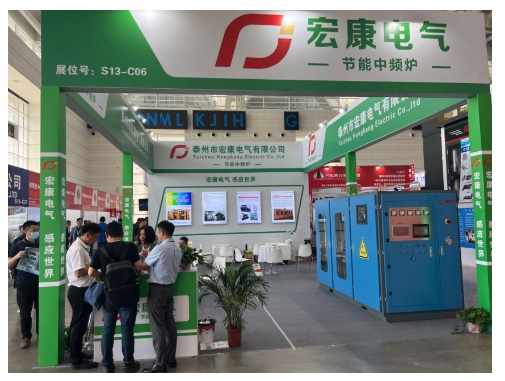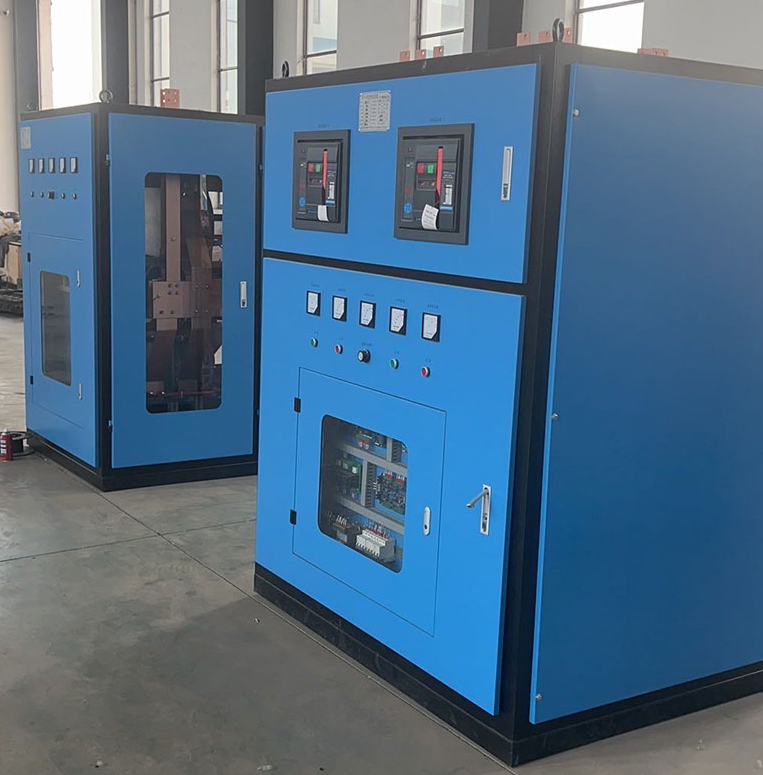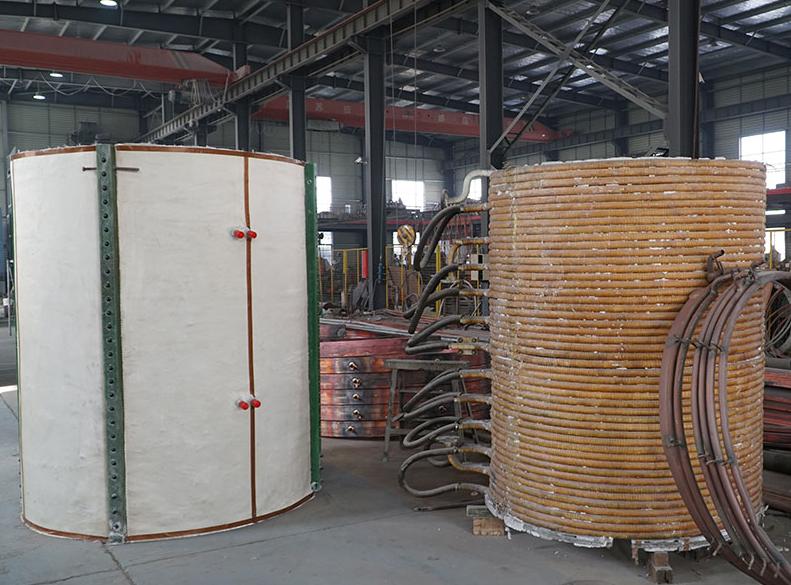Why Choose an Intermediate Frequency Induction Melting Furnace for Your Metalworking Needs?
Within the realm of metalworking, ensuring both efficiency and dependability in melting technologies is paramount for upholding high production standards, while also addressing the ever-growing demands imposed by the market. Among the various innovations that have garnered considerable attention, the Intermediate Frequency Induction Melting Furnace stands out as a particularly noteworthy advancement. This sophisticated furnace leverages electromagnetic induction to facilitate the melting of metals and alloys with remarkable efficiency, thus offering a wide array of benefits in contrast to more conventional melting techniques.
As a prominent entity in the sphere of induction melting furnace technology, Taizhou Hongkang Electric Co., Ltd. provides tailored solutions crafted to accommodate an extensive spectrum of industrial needs. In this blog, we will delve into the specific demands addressed by intermediate frequency induction melting furnaces, as well as the innovative solutions they offer, demonstrating why these systems are rapidly becoming essential in the landscape of contemporary metalworking.
What is an Intermediate Frequency Induction Melting Furnace?
Understanding the Melting Process
An intermediate frequency induction melting furnace operates by inducing electromagnetic currents within the material being melted. This is achieved by generating high-frequency alternating currents (ranging from 1000 Hz to 100 kHz), which pass through a coil surrounding the crucible holding the metal. The electromagnetic field that forms around the coil induces eddy currents within the metal, which leads to rapid and uniform heating. This efficient heat transfer mechanism makes the furnace ideal for melting various metals and alloys.
Compared to conventional melting methods, intermediate frequency induction melting is faster, more energy-efficient, and provides greater control over the melting process. This makes it suitable for foundries and metalworking facilities looking for higher precision and productivity.
Wide Range of Metal Melting Capabilities
The intermediate frequency induction melting furnace is extremely versatile. It can handle a wide array of metals and alloys, making it an ideal choice for diverse metalworking needs. These furnaces can melt materials such as:
- Iron and steel
- Copper and brass
- Aluminum and its alloys
- Precious metals (gold, silver, platinum)
- Nickel and its alloys
- Zinc and tin
This broad material compatibility is one of the key reasons why intermediate frequency induction furnaces are widely used in different sectors, from industrial manufacturing to jewelry production.
Tailored Configurations for Specific Requirements
Taizhou Hongkang Electric Co., Ltd. manufactures intermediate frequency induction melting furnaces in various configurations to suit different melting volumes and process requirements. Whether a foundry needs to melt small batches of precious metals or large quantities of industrial alloys, there is a solution designed to optimize both energy consumption and melting time.
Key Benefits of Intermediate Frequency Induction Melting Furnaces
Efficiency and Energy Savings
One of the primary reasons why companies choose intermediate frequency induction melting furnaces is their energy efficiency. By utilizing electromagnetic induction, these furnaces generate heat directly within the metal, minimizing heat loss and reducing the energy required to achieve the desired temperature. This contrasts with traditional furnaces, where much of the energy is wasted in heating the furnace walls or the surrounding atmosphere.
The result is lower operational costs and reduced environmental impact. For foundries and metalworking facilities aiming to improve their energy efficiency, an intermediate frequency induction furnace offers a sustainable solution that aligns with modern environmental standards.
Flexibility in Melting Operations
The flexibility offered by intermediate frequency induction melting furnaces is another compelling reason to choose this technology. These systems can quickly switch between different metals and alloys, allowing manufacturers to meet diverse product demands without the need for significant downtime or adjustments.
For instance, a facility melting steel one day can easily switch to aluminum or precious metals the next, optimizing productivity. This multi-metal compatibility reduces the need for multiple furnaces dedicated to different materials, saving both space and capital investment.
Moreover, the ability to control the melting process with precision makes intermediate frequency induction furnaces suitable for producing metals with exacting specifications. Whether it’s maintaining alloy composition or achieving specific material properties, the furnace’s control systems offer unparalleled consistency.
Improved Production Speed
Speed is an essential factor in modern metalworking. Intermediate frequency induction melting furnaces significantly reduce the time it takes to melt metals, thanks to their rapid heating capabilities. This means manufacturers can melt larger quantities of metal in less time, allowing them to increase throughput and meet tight production deadlines.
The rapid heating also translates to shorter cycle times, which leads to a faster return on investment for companies. In a competitive market, having a furnace that delivers high-quality melted metals quickly can be the key to maintaining a competitive edge.
Meeting Modern Foundry Needs with Advanced Solutions
Enhanced Control and Automation
Modern foundries require advanced technologies that provide precise control over the melting process. Taizhou Hongkang Electric Co., Ltd.’s intermediate frequency induction furnaces are equipped with state-of-the-art control systems that enable operators to monitor and adjust key parameters such as temperature, power input, and melting time in real-time. This ensures consistent melting quality and helps prevent defects or issues during the casting process.
In addition to control, many of these furnaces come with automation options that reduce the need for manual intervention. Automation minimizes human error, increases safety, and streamlines the overall production process. As a result, foundries can operate more efficiently while maintaining high standards of safety and quality.
Durability and Low Maintenance
Another reason to consider intermediate frequency induction melting furnaces is their durability and low maintenance requirements. These furnaces are designed to withstand the rigors of industrial use, with robust construction materials and minimal wear components. Since the electromagnetic induction process generates heat within the metal itself, the furnace walls and components experience less thermal stress compared to traditional furnaces.
Furthermore, fewer moving parts mean fewer points of failure, leading to less downtime for maintenance and repairs. This reliability ensures that facilities can continue production with minimal interruptions, further enhancing overall productivity.
Customization for Specific Applications
Each foundry or metalworking facility has unique requirements, and the ability to customize the furnace to specific needs is a significant advantage. Taizhou Hongkang Electric Co., Ltd. provides options to customize furnace configurations, including size, power capacity, and coil design. This customization ensures that the furnace operates at peak efficiency for each specific application, whether it’s melting ferrous metals or non-ferrous alloys.
Why Partner with Taizhou Hongkang Electric Co., Ltd.?
Industry Expertise and Innovation
Taizhou Hongkang Electric Co., Ltd. has earned a reputation for producing high-quality, reliable induction melting furnaces that meet the demands of modern metalworking industries. With years of experience in designing and manufacturing melting furnaces, the company has continually innovated to provide cutting-edge solutions that enhance productivity, efficiency, and safety.
Comprehensive Support and Service
When investing in complex industrial equipment like an intermediate frequency induction furnace, having access to comprehensive support is crucial. Taizhou Hongkang Electric Co., Ltd. offers not only high-quality products but also exceptional after-sales service, including installation, training, and ongoing maintenance. This ensures that customers get the most out of their investment and can rely on their equipment for years to come.
Tailored Solutions for Every Foundry
Whether a customer is running a small, specialized metalworking shop or a large-scale industrial foundry, Taizhou Hongkang Electric Co., Ltd. provides tailored solutions that meet individual production needs. With a wide range of configurations and customization options, the company ensures that every furnace operates efficiently, reliably, and safely.
Conclusion
In today’s competitive metalworking industry, efficiency, precision, and flexibility are more important than ever. An intermediate frequency induction melting furnace from Taizhou Hongkang Electric Co., Ltd. offers a comprehensive solution to meet these needs. With its energy-efficient operation, rapid melting times, and versatility in handling different metals and alloys, this furnace technology is an essential tool for modern foundries and metalworking facilities.
By choosing an intermediate frequency induction melting furnace, businesses can achieve higher productivity, reduce operational costs, and stay competitive in an evolving market.



